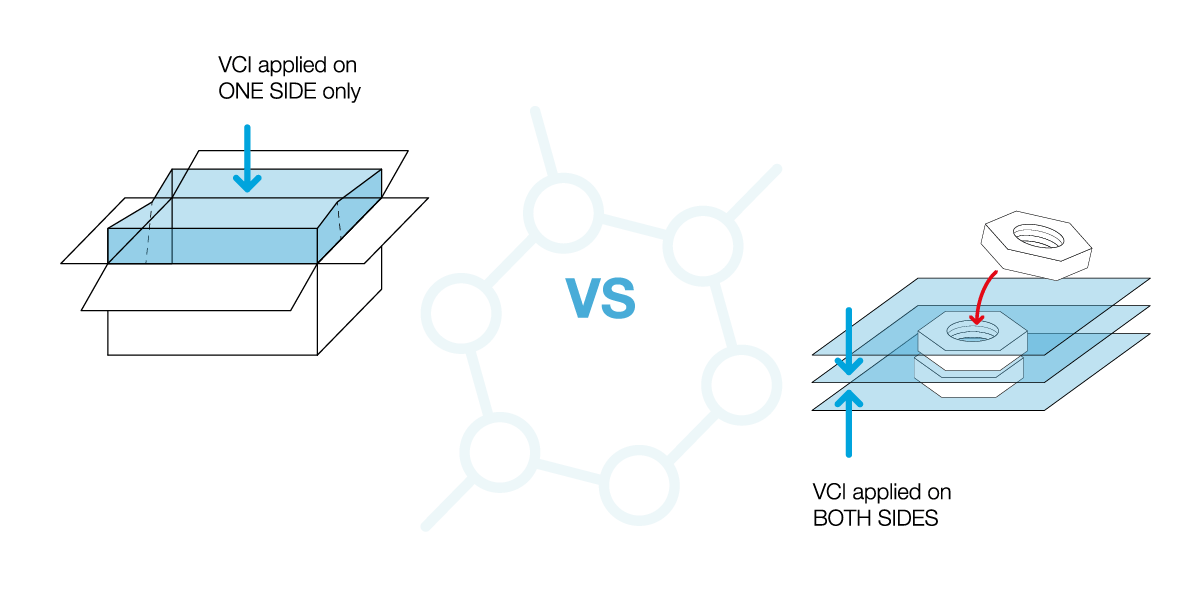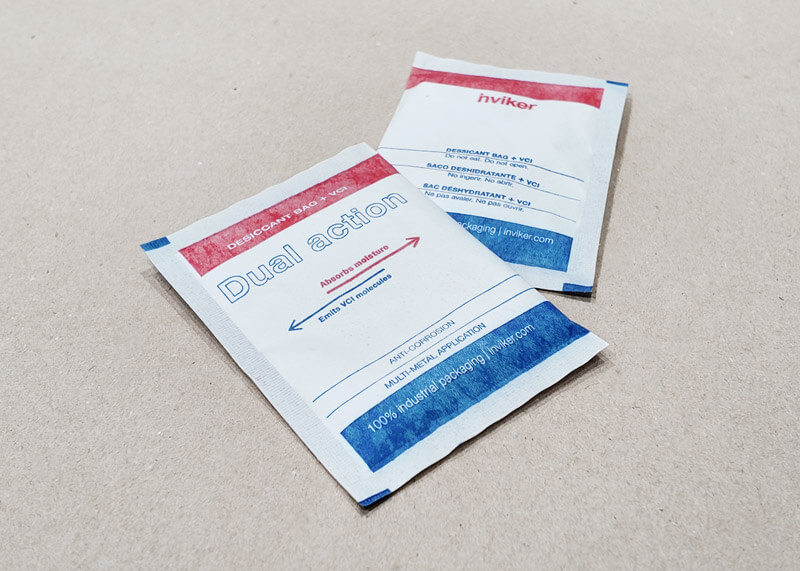When it comes to preventing corrosion in metal components, choosing a good material is not enough. In many cases, failures in corrosion protection are not caused by the product itself, but by improper application of VCI packaging.
This guide outlines the most relevant good practices for operators and logistics personnel handling packaging with volatile corrosion inhibitor (VCI), and complements the key principles discussed in our VCI packaging usage manual.

Table of contents
Preparing the parts: the essential first step
Before applying any VCI treated packaging, it is crucial to ensure that all parts are in optimal condition. Incorrect preparation can completely undermine the effectiveness of corrosion protection.

Key aspects to control at this stage include:
- Thorough cleaning and drying
Any remaining oil, dust, moisture or metal shavings on the surface may interfere with the protective action of the VCI.
- Handling with clean gloves
Skin acidity and dirt on hands or gloves are common sources of corrosion. Clean and intact gloves must be worn throughout this phase.
- Correct part temperature
Always pack at room temperature. If the parts have just come out of production, allow them to cool down before packaging. This prevents internal condensation, one of the most frequent causes of corrosion.
Correct application of VCI packaging
Each VCI carrier has its own characteristics, but all follow the same fundamental rule: the VCI treated side must face the metal.
For large volume packaging:
- Distribute VCI corrosion inhibitors evenly throughout the container.
- Use VCI-treated interleaving layers between stacked components in bulk shipments, ensuring that the molecules can reach all exposed surfaces. Make sure the VCI is active on both sides of the material (e.g. VCI plastic film sheets or dual sided VCI paper).

Creating a closed and controlled environment
For VCI to function effectively, the parts must remain in a sealed and enclosed environment where VCI molecules can saturate the internal atmosphere and form an effective barrier on the metal surfaces.
Depending on the packaging type, use zip closure, adhesive tape, cable ties or simply knot the bag, as long as it is securely sealed.

- Always close bags, covers or containers properly.
- If the packaging process must be interrupted, apply a temporary airtight seal to maintain protection.
- Minimise air exposure time between application of VCI packaging and final sealing.
Material compatibility: what to avoid
Certain materials can neutralise the effect of VCI or even promote corrosion. To avoid this:
- Never allow metal components to come into contact with untreated paper, cardboard, wood or aggressive foams.
- Only use neutral plastics and materials certified as VCI compatible.
In environments with high humidity or sharp temperature changes, combining VCI with desiccant bags is particularly effective in preventing condensation. Learn more in our dedicated article on desiccant bags.
Logistics and internal control best practices
Effective corrosion protection using VCI also relies on organisational and logistical measures that ensure traceability, material integrity and consistency across processes.
- Choosing nitrite-free multimetal VCI
Safer for operators and compliant with international regulations. Always work with a specialised supplier.
- Training and procedure monitoring
A well-trained team helps prevent common errors such as leaving packaging open, reusing spent materials or handling parts without gloves.
- Proper labelling and tracking
Record the VCI type, application date and estimated protection period on each package.
- Storage of VCI packaging materials
Keep VCI products in their original packaging, stored in a dry place away from heat and UV light. This is essential to preserve their protective properties. More on the topic of storage and shelf life can be found in our previous post on corrosion protection.
Corrosion protection is only effective when applied properly. By following these guidelines and good practices, industrial businesses can:
- Reduce costs due to returns and complaints,
- Avoid non-conformities in deliveries and
- Improve logistics efficiency across the supply chain.
Explore our complete guide on corrosion protection in industrial packaging to learn how to integrate VCI materials strategically into your processes.
Need tailored advice? Contact our technical team and we’ll help you choose the most suitable solution based on type of parts, logistics route and conditions and sector.



